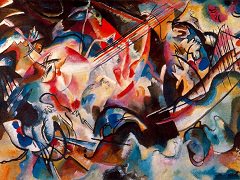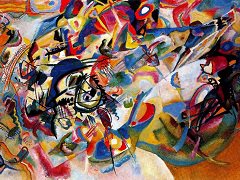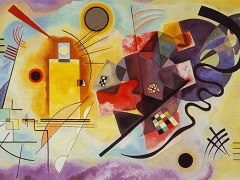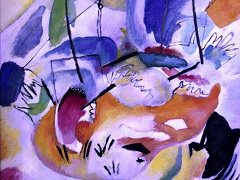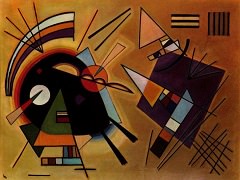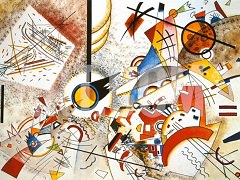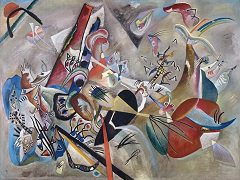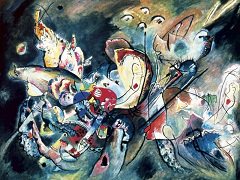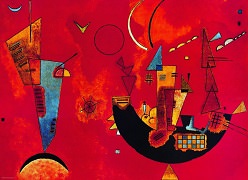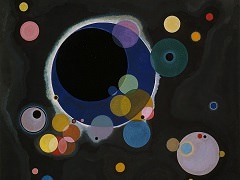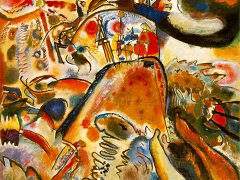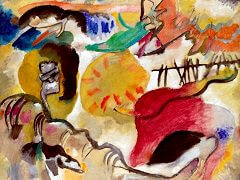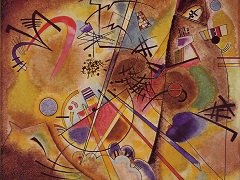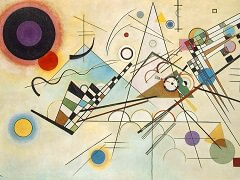Farbstudie Quadrate, 1913 by Wassily Kandinsky
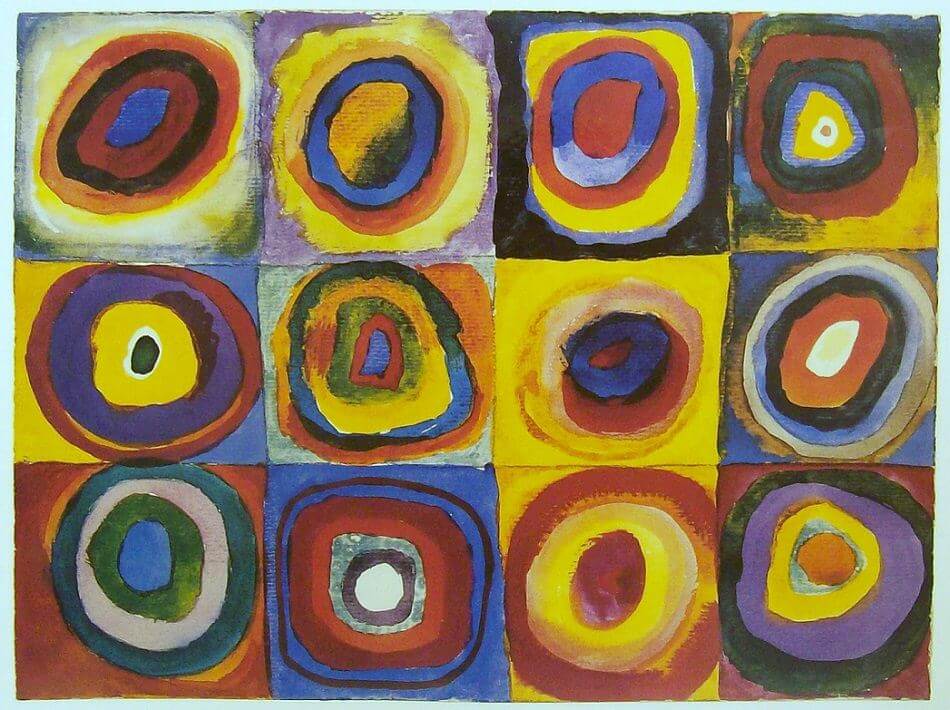
To Kandinsky, colours on the painter's palette evoke a double effect: a purely physical effect on the eye which is charmed by the beauty of colours, similar to the joyful impression when we eat a delicacy. This effect can be much deeper, however, causing a vibration of the soul or an "inner resonance" - a spiritual effect in which the colour touches the soul itself.
The obvious properties we can see when we look at an isolated colour and let it act alone; on one side is the warmth or coldness of the colour tone, and on the other side is the clarity or obscurity of that tone. Warmth is a tendency towards yellow, and coldness a tendency towards blue; yellow and blue form the first great, dynamic contrast. Yellow has an eccentric movement and blue a concentric movement; a yellow surface seems to move closer to us, while a blue surface seems to move away. Yellow is a typically terrestrial colour, whose violence can be painful and aggressive. Blue is a celestial colour, evoking a deep calm. The combination of blue and yellow yields total immobility and calm, which is green.
Clarity is a tendency towards white, and obscurity is a tendency towards black. White and black form the second great contrast, which is static. White is a deep, absolute silence, full of possibility. Black is nothingness without possibility, an eternal silence without hope, and corresponds with death. Any other colour resonates strongly on its neighbors. The mixing of white with black leads to gray, which possesses no active force and whose tonality is near that of green. Gray corresponds to immobility without hope; it tends to despair when it becomes dark, regaining little hope when it lightens.
Red is a warm colour, lively and agitated; it is forceful, a movement in itself. Mixed with black it becomes brown, a hard colour. Mixed with yellow, it gains in warmth and becomes orange, which imparts an irradiating movement on its surroundings. When red is mixed with blue it moves away from man to become purple, which is a cool red. Red and green form the third great contrast, and orange and purple the fourth.
All these colors, present in Farbstudie Quadrate, seem to justify Kandinsky's descriptions.

